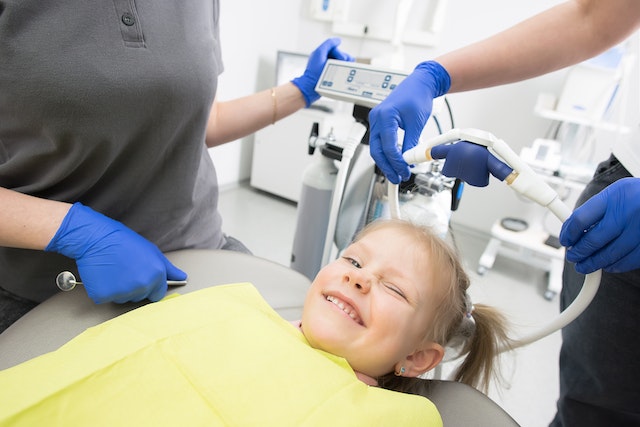A dentist’s appointment is something that we all dread. And when it is for our little ones, the fear increases multifold. This came true for us when my four-year-old had a mouth full of impacted teeth. Besides the other dental procedures recommended, root canal treatment was the one (on two teeth) that we dreaded the most. Let’s first find out why a root canal or pulpotomy becomes the only solution if it has been suggested by your child’s dentist.
Why Root Canal for Milk Teeth
Root canal for milk teeth becomes inevitable if the cavities and decay have reached the roots of the teeth. Understand this, if it goes any further, tooth extraction might be the only resort. If I quote my son’s dentist’s words, “This tooth can still be saved”. There is still hope to repair the tooth and make use of it, unlike the ones which are only good if pulled out of the mouth.
What to Expect During the Procedure
- The dentist will numb the area (gums and teeth) using local anesthesia. Ours used a strong minty spray and two injections. Do not worry as the injections were mildly painful after the spray.
- Then they start the procedure which might take a while to complete. Although it can vary depending on how well your child cooperates with the dentist.
- Be mentally prepared to be terrified and practice how to stay calm. Seeing your child go through the procedure can be a harrowing experience, but you must be focused on helping him through it successfully.
- Let the dentist do their job and ask them any doubts you have in mind before the treatment begins. You need to trust the expert and their methods.
- That said, you know your child best. The procedure can be close to traumatic for the child, more psychologically than physically, so be well prepared to help them calm down during the process.

What to Expect After the Treatment
- There will be swelling on the side of the treatment.
- Your dentist will explain to you all the dos and don’ts post-procedure, like giving them soft food, brushing only the next day, etc.
- Start with the antibiotics and pain relievers as recommended by the doctor as soon as you can.
- The first 24 hours can be crucial. Keep an eye that they don’t bite or hurt in the area around them (Lips or gums).
- Sometimes there can be side effects from the antibiotics or sedatives such as nausea and vomiting.
- Your child can even run a low-grade fever after a root canal treatment on milk teeth. It can be because of psychological trauma or an infection. If it is high and does not subside after the first day of the procedure, please see the pediatrician.
How to prepare yourself and the child for the dental procedures
- Prepare yourself Mentally. One great tip our pediatric dentist tried to bolster was that more than my four-year-old, I need to be mentally prepared for the process. Whether you are opting for general anesthesia or local, it can be distressing for you to see your child go through it.
- This is the hard truth – some children will cooperate less, some more, and some not at all; but there will be no child (especially very young ones) who will happily sit through the dental procedures. As you know your child the best, it will be good to accordingly acquaint them with the details of what is going to happen there.
- Reward them for their bravery. Take them for the consultation first and get them a gift. You can tell them that this is for the courage they have shown and will get again after the next visit.
- Show them videos on how kids have managed to bravely get dental procedures done.

Watching your kid go through the pain and trauma can be heartbreaking. But always keep reminding them, and yourself that it is for their own good. There is simply no alternative to save a decaying tooth.
P.S. This article is purely based on my experience and research. Please don’t rely on it for any medical advice.
